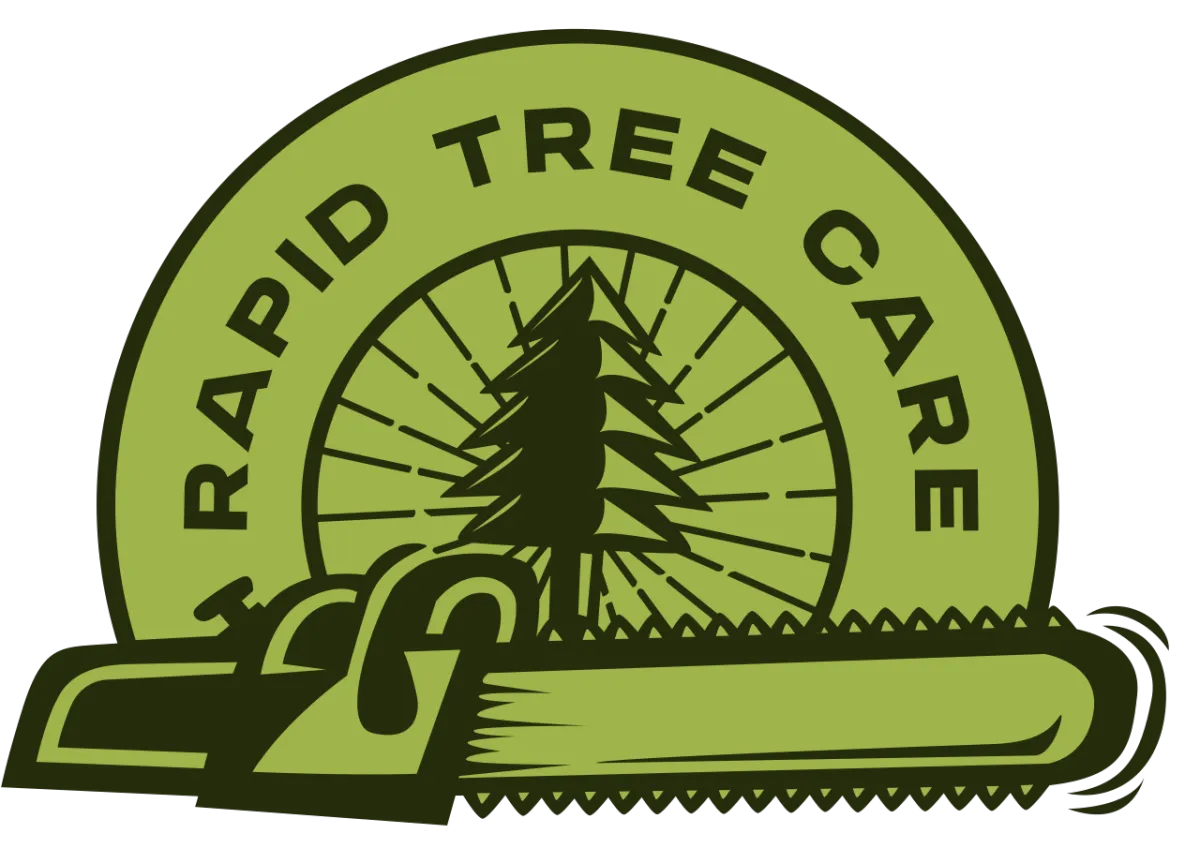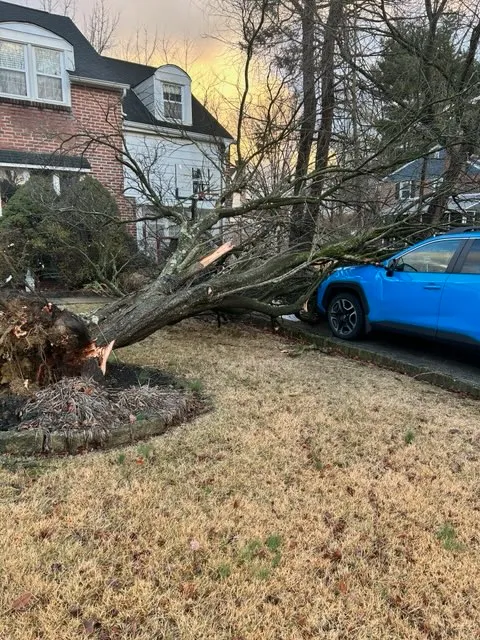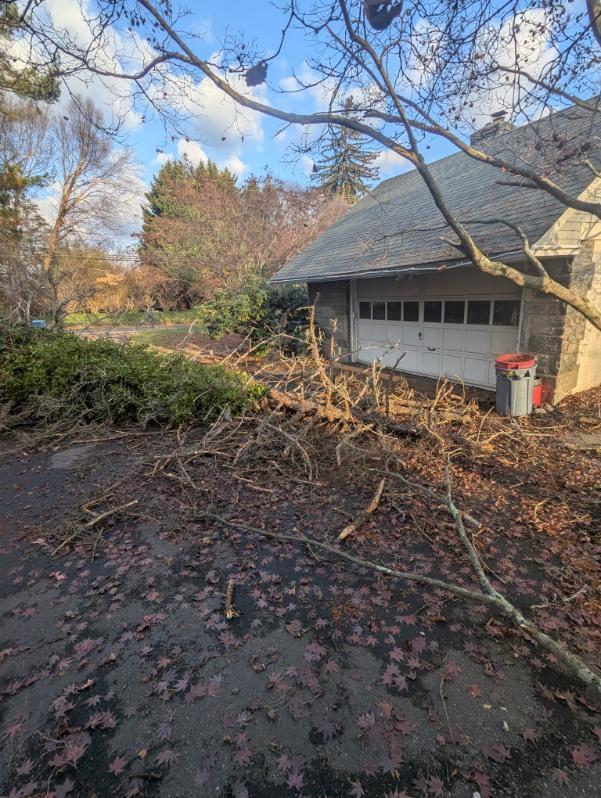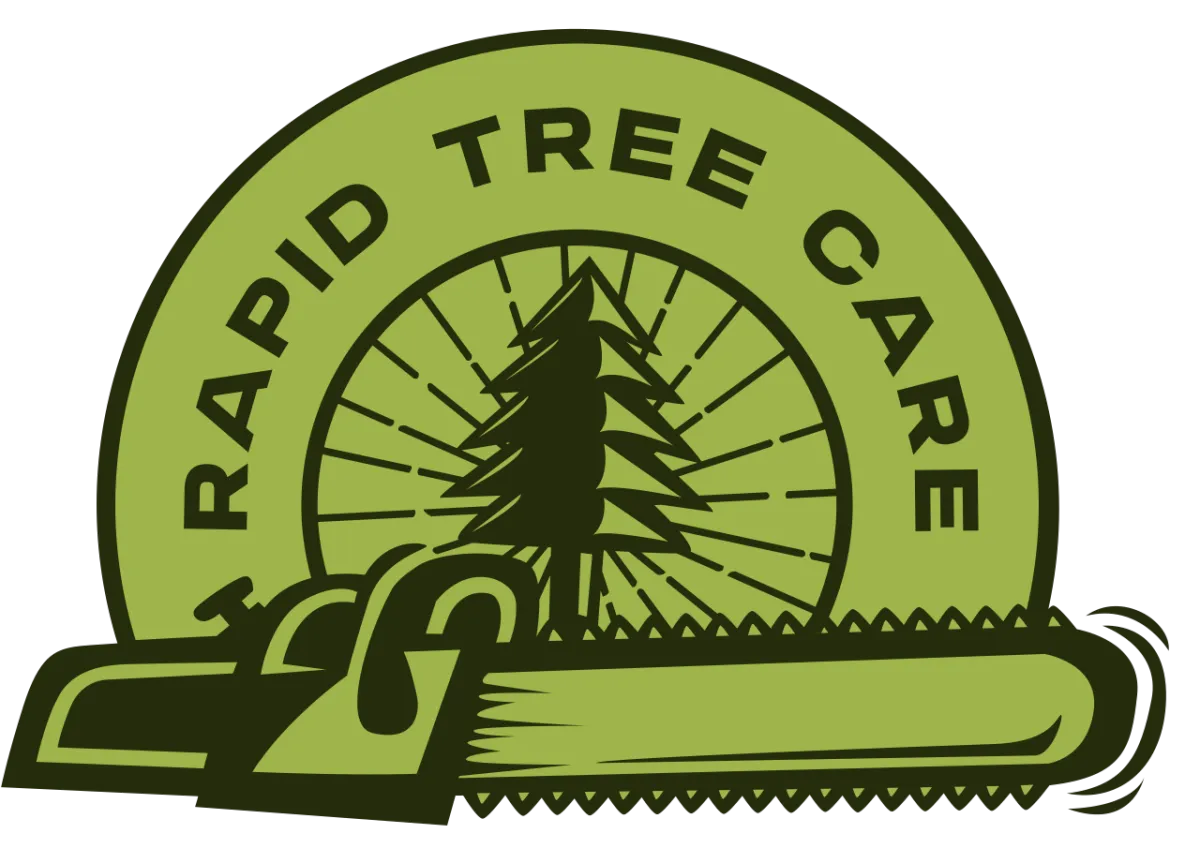
Quick & Affordable Tree Services in the Delaware Valley
CONTACT RAPID TREE CARE TODAY FOR YOUR FREE ESTIMATE

Quick & Affordable Tree Services in the Delaware Valley
CONTACT RAPID TREE CARE TODAY FOR YOUR FREE ESTIMATE
GET IN TOUCH WITH YOUR LOCAL, EXPERIENCED ARBORIST TODAY

Preventing Hazards and Regular Trimming
Identifying and Avoiding Tree Hazards
Pruning a few branches or removing a fallen tree are only a small part of proper tree care. Just as crucial is recognizing and avoiding dangerous situations and diseases associated with trees. Trees are prone to a wide range of natural and man-made stressors when they are neglected, including harmful pests, strong winds, and improper landscaping as well as construction practices. By keeping an eye out for these typical indicators, our skilled teams can help property owners identify at-risk trees and promptly address a safety problem.
Why Do Trees Fall?
Trees that have serious damage or structural flaws are dangerous because they could fall on someone, damage the surrounding area, or ruin property. Unfortunately, tree accidents are more prone to occur in older, larger trees and are generally unpredictable. However, with the right tree care and upkeep, prevention is possible. Regularly scheduling reliable tree care services can help avoid obstructive growth, disease, and structural problems.
Preventing Hazards and Regular Trimming
Identifying and Avoiding Tree Hazards
Pruning a few branches or removing a fallen tree are only a small part of proper tree care. Just as crucial is recognizing and avoiding dangerous situations and diseases associated with trees. Trees are prone to a wide range of natural and man-made stressors when they are neglected, including harmful pests, strong winds, and improper landscaping as well as construction practices. By keeping an eye out for these typical indicators, our skilled teams can help property owners identify at-risk trees and promptly address a safety problem.
Why Do Trees Fall?
Trees that have serious damage or structural flaws are dangerous because they could fall on someone, damage the surrounding area, or ruin property. Unfortunately, tree accidents are more prone to occur in older, larger trees and are generally unpredictable. However, with the right tree care and upkeep, prevention is possible. Regularly scheduling reliable tree care services can help avoid obstructive growth, disease, and structural problems.
Warning Signs of a Dangerous Tree
Property owners may maintain their landscaping neatly by performing routine maintenance, but it can also be helpful to understand the warning signs of a dangerous or ill tree. Generally speaking, any obvious alterations to a tree that appear unusual should raise suspicions. Keep an eye out for these typical warning indicators.
Disturbance in Soils
Tree roots can get suffocated and damaged when the soil at the base of the tree is disturbed, which happens frequently during construction.
Tiny Yellow Leaves
Chlorosis, or yellowing of the leaves, is frequently a sign that a tree is stressed. Damage to the roots that hinders the tree's capacity to absorb vital nutrients and water may be the cause of this. Such damage could result from root severance or soil compaction during construction.
Emerging Suckers from the Stem's Base
Strong shoots known as suckers emerge from the tree's roots or base. Usually a stress response, their development shows that the tree is trying to recover from trauma, such damage to its roots.
Dry Twigs
Dry or withered twigs indicate a problem with the tree's vascular system. This may result from injury to the roots, which interferes with the flow of nutrients and water from the roots to the canopy.
Big, Dead Branches
Dieback, or large dead branches, is a serious sign of root distress. Certain branches may die because the tree may not be able to maintain its entire canopy if its roots are damaged.

Cracked and Split Trunk
Tree trunks that are broken or split are more likely to fail. In addition to harming the tree's capacity to flourish, splits and cracks also raise the likelihood that the tree will fall over.
Because they are more likely to break, look for trees with several trunks. Property owners should book tree removal services as soon as possible after heavy rains and hurricane winds because trunk fracturing is also prone to occur after severe storm conditions.
Broken and Dead Branches
Trees naturally undergo cladoptosis, or branch shedding. However, when dead branches appear to fall in greater amounts or in random patterns, call a trusted tree service company right away and ask for tree pruning services.
Known as "widow makers," dead branches near a tree's crown are especially concerning because they have the potential to uproot healthy branches and fall to the ground.

Warning Signs of a Dangerous Tree
Property owners may maintain their landscaping neatly by performing routine maintenance, but it can also be helpful to understand the warning signs of a dangerous or ill tree. Generally speaking, any obvious alterations to a tree that appear unusual should raise suspicions. Keep an eye out for these typical warning indicators.
Disturbance in Soils
Tree roots can get suffocated and damaged when the soil at the base of the tree is disturbed, which happens frequently during construction.
Tiny Yellow Leaves
Chlorosis, or yellowing of the leaves, is frequently a sign that a tree is stressed. Damage to the roots that hinders the tree's capacity to absorb vital nutrients and water may be the cause of this. Such damage could result from root severance or soil compaction during construction.
Emerging Suckers from the Stem's Base
Strong shoots known as suckers emerge from the tree's roots or base. Usually a stress response, their development shows that the tree is trying to recover from trauma, such damage to its roots.
Dry Twigs
Dry or withered twigs indicate a problem with the tree's vascular system. This may result from injury to the roots, which interferes with the flow of nutrients and water from the roots to the canopy.
Big, Dead Branches
Dieback, or large dead branches, is a serious sign of root distress. Certain branches may die because the tree may not be able to maintain its entire canopy if its roots are damaged.
Cracked and Split Trunk

Tree trunks that are broken or split are more likely to fail. In addition to harming the tree's capacity to flourish, splits and cracks also raise the likelihood that the tree will fall over.
Because they are more likely to break, look for trees with several trunks. Property owners should book tree removal services as soon as possible after heavy rains and hurricane winds because trunk fracturing is also prone to occur after severe storm conditions.
Broken and Dead Branches

Trees naturally undergo cladoptosis, or branch shedding. However, when dead branches appear to fall in greater amounts or in random patterns, call a trusted tree service company right away and ask for tree pruning services.
Known as "widow makers," dead branches near a tree's crown are especially concerning because they have the potential to uproot healthy branches and fall to the ground.
Improving Tree Health: Pruning's Benefits
Tree trimming enhances your trees' general health and vitality in addition to reducing the risk of fire. Pruning sick or dead branches increases ventilation, lowers the chance of limbs collapsing, and strengthens the tree's resistance to environmental stresses like drought. Appropriate trimming discourages the growth of combustible understory vegetation by increasing the amount of sunlight that reaches the ground. You may make your landscape safer and healthier for fire prevention and tree health by keeping your trees trimmed.
It's best to speak with a tree expert whenever you have questions about the condition of your trees. Trees are complicated, erratic, and deserve excellent care, just like any other living thing.
At Rapid Tree Care, we work hard to give our clients trustworthy tree services. We prioritize providing thorough and open services because we take tree health seriously. Call or text us today to get a free estimate and start caring for your trees better!
CONTACT RAPID TREE CARE TODAY FOR YOUR FREE ESTIMATE

Rapid Tree Care
Warminster PA 18974
(267) 589-8168
Contact Us
Location
Facebook
Instagram